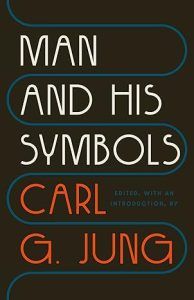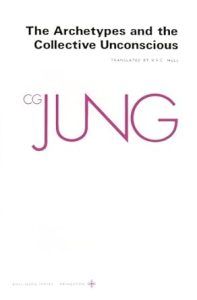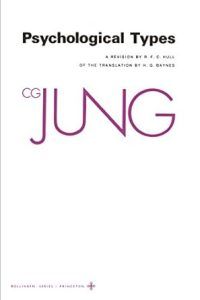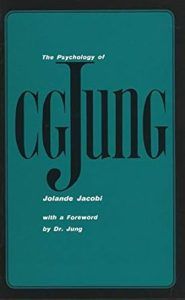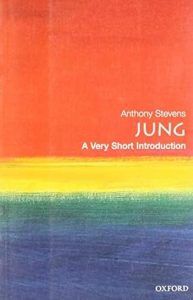6 Core Concepts of Jungian Psychology
Jung is famous for a whole range of innovations and theories in psychology. They are too numerous to list. The best-known ones include archetypes, the notion of the collective unconscious, the persona and the shadow, the anima/animus, and Jung’s contributions to personality type theory.
1. Archetypes
Jung argued that archetypes constitute fundamental elements of the human psyche. He described archetypes as universal symbols or patterns that are present in the collective unconscious, a deeper layer of the psyche that is shared by all human beings. Archetypes can be discovered in myths, fairy tales, religion, art, and dreams, and they shape human behavior, emotions, and thought patterns (Jung, 1959).
Jung believed that archetypes emerge from the collective experiences of humanity and represent fundamental human motifs and themes. They are therefore innate and inherited, and they shape how we perceive and interpret the world around us (Jacobi, 1973).
Jungian archetypes serve as templates for human experiences and are expressed through symbols and images (Sharp, 1991). Archetypes are pervasive across cultures and narratives, influencing human experiences and shaping our collective understanding of the world (Jacobi, 1973).
2. Collective unconscious
Central to Jung’s framework is the notion of the collective unconscious, which is different from the personal unconscious, which features centrally in Freud’s psychoanalytic theory.
The Jungian collective unconscious is a reservoir of archetypal symbols and motifs that are shared across cultures and generations. Through his exploration of dreams, myths, and symbols, Jung (1968) sought to illuminate the universal patterns that shape all of human experience.
3. Persona and shadow
According to Jung, the persona represents the social mask we wear to navigate the external world, while the shadow embodies the repressed, darker aspects of our psyche. Integrating the shadow is crucial for achieving psychological wholeness (Jung, 1968).
Jungian therapists and coaches often engage in shadow work — the attempt to make these less desirable aspects of ourselves conscious and to integrate them by acknowledging and making peace with them.
4. Individuation
In Jungian psychology, individuation refers to the process of psychological development and self-realization that results from the integration of the conscious and unconscious facets of our psyche.
Jungian individuation can be understood through several key components (Jacobi, 1973; Sharp, 1991).
1. Self-integration
This is the integration of various aspects of the psyche, including conscious and unconscious elements, personal and collective symbols, and masculine and feminine qualities.
2. Archetypal dynamics
Archetypal figures and symbols from the collective unconscious include the anima/animus and the shadow and play a significant role in the individuation process by bringing unconscious material into conscious awareness.
3. Symbolic imagery and dreams
Jung believed that the unconscious communicates through symbols and images, which can be explored through dreams, active imagination, and creative expression. Individuation involves engaging with and interpreting these symbolic messages to gain insight into our unconscious motivations and conflicts (Jung, 1964).
4. Personal development
Individuation is a lifelong process of personal growth and development characterized by increased self-awareness, emotional maturity, and individuated identity. It involves confronting and working through psychological challenges, threshold moments, conflicts, and traumas to achieve greater wholeness and authenticity.
5. Transcendence and integration
Individuals may transcend limited ego identity and achieve a deeper sense of connection with the self, others, and the cosmos. This transcendence involves recognizing and embracing the inherent paradoxes and complexities of the human experience, leading to a more integrated and harmonious way of being.
6. Cultural and social context
Jungian individuation is influenced by cultural, social, and historical factors, as well as individual experiences and circumstances. It involves deliberately saying yes to or else rejecting dominant cultural norms and belief systems, rather than just accepting everything uncritically (Stevens, 2001).
5. Anima/animus
Jung’s concept of the anima and animus refers to archetypal structures within the human psyche that represent the contrasexual aspects of our unconscious. A woman’s contrasexual aspect of the unconscious would be the animus, and a man’s would be the anima. In other words, Jung believed that everyone has both a male and a female part and that we need to embrace and integrate them in our processes of individuation (Jung, 1959).
In the process of individuation, we need to integrate our anima/animus into our conscious awareness. This integration leads to greater psychological balance and wholeness. Jung also emphasized that the anima/animus can have a shadow aspect (Jung, 1968).
For example, it may hold unconscious projections and repressed qualities associated with gender stereotypes and cultural conditioning. These shadow aspects can manifest as irrational fears, prejudices, or idealized fantasies about the opposite sex. Exploring and integrating these shadow aspects is essential for psychological growth (Jung, 1968).
6. Personality types
In 1921, Jung wrote a highly influential book called Psychological Types. In this book, Jung presents his theory of psychological typology, which posits that individuals exhibit consistent patterns of behavior, cognition, and personality traits that can be categorized into distinct types.
Jung identified six pairs of opposites that define us. They include two primary attitude orientations (introversion and extraversion) and four primary functions (thinking and feeling, and sensation and intuition). These six orientations and functions combine to form eight possible personality types (Jung, 1921).
Jung’s model still serves as the basis for a range of different psychometric tools, including the Myers-Briggs Type Indicator and Insights Discovery Profiles.
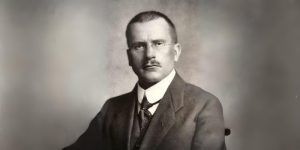 Alongside Sigmund Freud, the psychiatrist and psychoanalyst Carl Gustav Jung (1875–1961) is one of the most important innovators in the field of modern depth psychology.
Alongside Sigmund Freud, the psychiatrist and psychoanalyst Carl Gustav Jung (1875–1961) is one of the most important innovators in the field of modern depth psychology.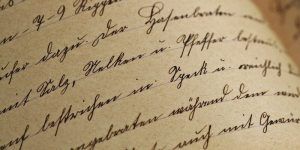 Carl Gustav Jung, often referred to as C. G. Jung, was a psychiatrist and psychoanalyst who founded analytical psychology.
Carl Gustav Jung, often referred to as C. G. Jung, was a psychiatrist and psychoanalyst who founded analytical psychology.
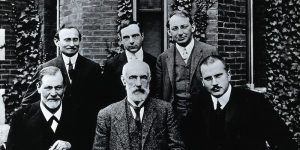 Jung initially embraced Freud’s psychoanalytic ideas before parting ways with his mentor and developing his own theories.
Jung initially embraced Freud’s psychoanalytic ideas before parting ways with his mentor and developing his own theories.
